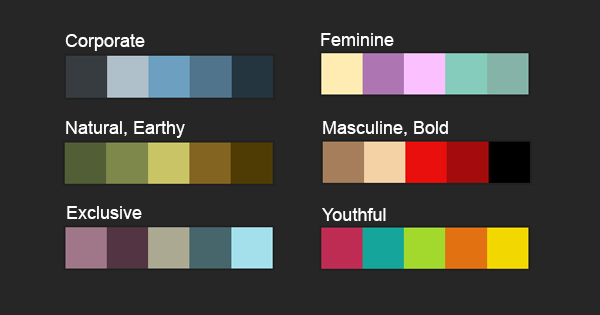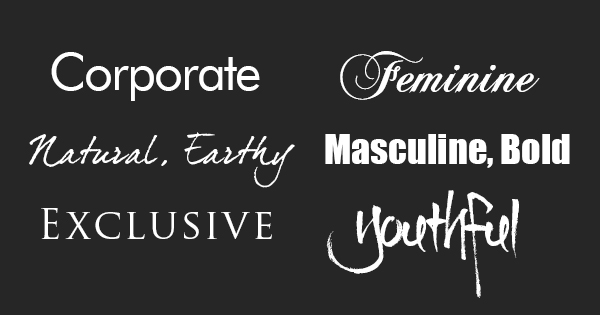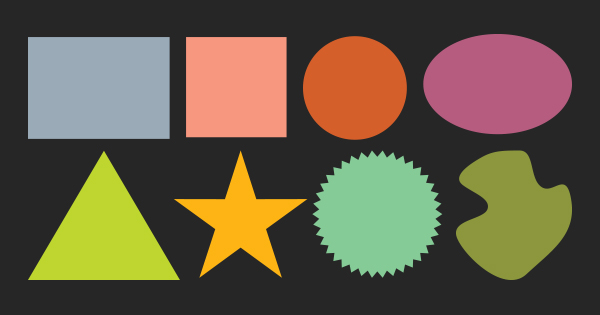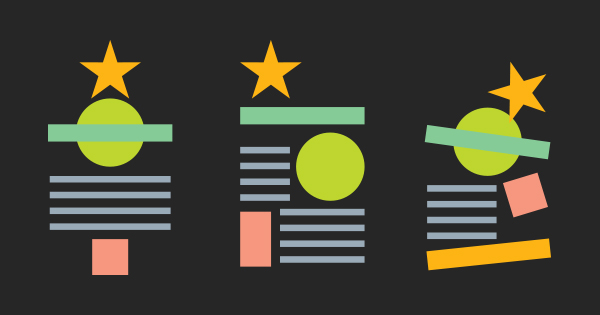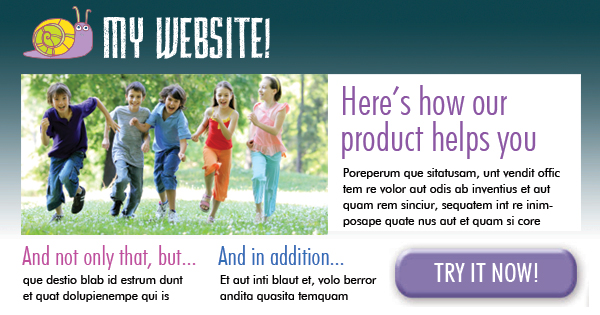Pros and Cons: should I build my own website?
 I’m sure you’ve seen the ads – “build your own website in minutes.” Website DIY (do-it- yourself) services offer you a wide range of professional designs you can use for free or at a low cost. All you have to do is plug in your information using a simple drag-and-drop interface, and you can have a business website online in minutes. It sounds great – and it is a good service if you are just starting out, have no budget, and want to get online fast.
I’m sure you’ve seen the ads – “build your own website in minutes.” Website DIY (do-it- yourself) services offer you a wide range of professional designs you can use for free or at a low cost. All you have to do is plug in your information using a simple drag-and-drop interface, and you can have a business website online in minutes. It sounds great – and it is a good service if you are just starting out, have no budget, and want to get online fast.
But is it the best solution?
It’s kind of like choosing a place to have lunch. If you don’t have much money or time, then a fast-food joint might be the best solution. But you certainly wouldn’t take a client there!
Here’s a fast summary of the pros and cons of these “build your own website” services:
Pros:
Cost: If budget constraints are holding you back from getting online and having a website, then this can be a good temporary solution. Do-it-yourself website-builder software costs you little or nothing, if you buy their hosting package.
Speed: Using one of these pre-made designs, you can get up and running in minutes, or at least within a few hours. If you’re a startup business and need to get a fast web presence, this will get you online fast.
Looks: DIY website companies usually have a wide variety of professional web designs. These are normally very nicely put together and give your website a polished look right out of the box.
Ease: Their “drag-and-drop” interface lets you easily enter your own content. And you can see what it’s going to look like as you go – what you see is what you get.
Basic functionality: Your basic boilerplate website functionality is built in – things like standard pages, navigation, contact form, and, depending on the website design chosen, may include things like a slide show or even basic e-commerce.
Cons:
Not unique: Your website will look like a lot of other websites out there. Even if you plug in your logo, it will still have a sort of generic look that will not communicate what makes your company unique. It will do little towards establishing your brand identity. These same designs are used by many people.
Limited customization: While you do have customization options, such as changing the colors, inserting your logo, and inserting your own photos to replace their default photos, any significant customization will likely require a knowledge of web programming, image editing and website building tools. Custom images or lengthy content can sometimes stretch or “break” the template. Their designs are proprietary, which means that only their own programmers have access to the “inner workings,” unlike WordPress and other Content Management Systems, where the design templates are “open source” and can be freely modified by a web programmer.
No Search Engine Optimization: If you use one of these DIY sites, you’re pretty much on your own when it comes to SEO. SEO tools are limited or nonexistent. And some templates are even created in Flash, which is not SEO-friendly or easy to edit.
Limited scalability: As your business grows, you want your website to grow with you. You may want to add content, pages, and functionality such as e-commerce. DIY sites have very limited capability and adaptability. And with many of these sites – something they don’t mention – you can’t switch design templates. Once you choose a design, you’re stuck with it.
Limited functionality: With many of these DIY sites, it is not possible to incorporate a blog. There also may be limits on inserting video or other content. When choosing a design, you have to make sure it includes all of the functions you will need on your website.
Limited integration: These proprietary DIY websites are not compatible with WordPress or any other Content Management System. You cannot export a DIY site to WordPress.
You’re tied to your hosting: Another thing not mentioned is that these DIY sites are not moveable. If you build your site within a particular hosting environment using their proprietary tools, you can’t export the site to another hosting. If you decide to move your site in the future, you will have to rebuild it from scratch.
If you can live with these limitations, and you need to get a site up quickly and cheaply, then a “build your own website” service could be a solution. But if you want a website that uniquely presents your company image, has all the functionality you need, and is easily expanded and adapted to your growing business, then a custom site is probably the better choice.
And if you are concerned about having your website under your control, insist that your web designer use a Content Management System that gives you all of the user-friendly back-end tools to manage your own website.
How to get the most bang from your 2014 marketing bucks

 A new year is upon us. Will 2014 be a good, profitable year for you, or a year of struggle? A good New Year’s resolution might be to make the most of those scarce marketing and promotion dollars. This is particularly important for small businesses. Here are a few tips about how to get the most bang for your marketing bucks.
A new year is upon us. Will 2014 be a good, profitable year for you, or a year of struggle? A good New Year’s resolution might be to make the most of those scarce marketing and promotion dollars. This is particularly important for small businesses. Here are a few tips about how to get the most bang for your marketing bucks.
Recycle and re-use: If something is working, stick with it. If your ad copy is working, use it on your website or sales brochure. Get maximum use from your tried-and-true content. After all, Nike has been using “Just Do It” for 25 years. Capitalize on the equity you have in your existing logo, branding, and key product benefits. You know what’s working – double down on that. If it’s not working, then maybe it’s time for a change.
Do it yourself: There are a lot of marketing, advertising and graphic design tasks that you want to rely on a professional for, but there are many things you can do more efficiently and economically yourself. If you have a business blog, take the time to write articles frequently. After all, no one knows your business and area of expertise better than you do. When it comes to getting out an e-mail newsletter, use a service like Constant Contact, and learn how to rapidly put together a newsletter using their drag-and-drop interface. Writing a new product press release is best done by you or one of your staff. Keeping these routine promotional tasks in-house saves you money and gets you a better result.
Updating your website is something that you can do yourself if you had the foresight to have your website built using a user-friendly content management system (CMS).
Explore inexpensive options: There are many inexpensive or even free ways to get the word out about your company and products, and you should explore these. Consultants will often tell you that you need to “get on social media.” To that I would add “when it makes sense.” You have to know where your potential customers are. If they are on Facebook, then yes, have a business Facebook page and use it to announce news and events. But depending on your business and your clientele, you may find that Twitter, Pinterest or LinkedIn are more effective.
Press releases about new products or company news can be sent to local news outlets. If they are well written and contain real news, you could find them in print. And these cost you nothing.
Invest in what’s important: While there is a lot that you can do in-house or on the cheap, there are certain key promotional tasks you want to entrust to a professional. Creating a logo or a company branding is not something you want amateurs to do. It’s important to get it right the first time, so you are building on a solid foundation.
Creating the company website is also not something you want to use an amateur for. Creating a packaging design is something you should have done by a professional. When it comes to these key parts of your company image, you want the best professional help you can get. The amateur route may seem economical at the time, but it’s expensive in the long run – either in re-dos or in lost business.
Don’t overdo it: At the same time, don’t go overboard. Don’t create a 40-page website where a 10-page one would do. Don’t create a huge e-commerce website if you only have 2 or 3 products. You can always expand it later. Don’t go to the expense and trouble of designing and printing up a lot of glossy color brochures that may go out of date before they are used. Use your promotional dollars to create the exact items you need to promote your business efficiently.
One way to economize on your sales materials is to make them modular. Rather than printing up a glossy color brochure for every product, print up a generic company presentation folder and then fill it with one- or two-color fliers for each product or service. The sales person can just use the ones relevant to that customer.
Optimize: Make sure your website is optimized for best result. If you have a WordPress website, the Yoast plugin will walk you through SEO basics. For a more complete SEO optimization, hire an SEO expert to go through your site. Make sure your website content is fresh, up-to-date and accurate. When was the last time you went through and updated your content? Are there call-to-action buttons prominently on the Home page? Can site visitors easily order your products, find information, subscribe to your newsletter or contact your company?
These are just a few of the things you can do to make the most of your marketing and promotional dollars.
Have you found other ways to optimize your marketing budget?
7 Things Your Web Designer Needs to Understand About Your Business
 “I’ve already had two web designers try to put together our website,” the client confessed to me. “They both failed. Their designs were attractive, but they just couldn’t seem to connect with the realities of our business.”
“I’ve already had two web designers try to put together our website,” the client confessed to me. “They both failed. Their designs were attractive, but they just couldn’t seem to connect with the realities of our business.”
Unfortunately, this story is all too common. Many web designers are trained in graphic design, but know next to nothing about business. Their designs can be excellent, even brilliant. Their use of color, white space, typography, and balance can be masterful, but when it comes to things like marketing, sales, or branding, you get a blank look.
Too many businesses consider that a web designer is someone who just puts together a good-looking visual design. They are someone who “makes the website look good,” using whatever photographs, ad copy and logos are available. If they can throw in some “cutting edge” Flash graphics, so much the better.
But a competent graphic designer needs to be much more than this. He or she needs to have the intelligence to grasp complex business concepts and the skill to translate those concepts into a website that forwards the company’s goals.
Your website designer has to be willing to spend the time and effort to understand at least 7 things about your company:
 1. Your Goals: The most important thing for your web designer to know is your business goals. What are you trying to achieve? Are you trying to generate a high volume of leads for your sales force to follow up on? Are you going for direct sales? Are you trying to drive customers into your retail outlets? Every business has its own unique goals, and sometimes the goals are not obvious. If your designer really understands your goals, they will structure the website to achieve that. The goals drive everything.
1. Your Goals: The most important thing for your web designer to know is your business goals. What are you trying to achieve? Are you trying to generate a high volume of leads for your sales force to follow up on? Are you going for direct sales? Are you trying to drive customers into your retail outlets? Every business has its own unique goals, and sometimes the goals are not obvious. If your designer really understands your goals, they will structure the website to achieve that. The goals drive everything.
2. Your Products: What are you selling? Is it a physical product, a service, or a combination of both? Does your designer understand your product? Has he or she experienced it? Do they know how it is made, what goes into it, what benefits it provides for the user? What are customers saying about your product? Why do they prefer it over other similar products? What do customers like about your product? What arguments have sales people found most effective?
3. Your Customers: If your web designer does not understand exactly who they are designing for, they can make costly mistakes. They could design a site for end users, for instance, when you really intend for the site to be used by your sales and distribution network. Some designers may want to make your site look “young and edgy” (because that’s the type of design they personally like), when your target audience is older and more conservative. (or vice-versa) The more time your designer spends really understanding who you are trying to reach, the better.
4. Your Competition: Does your website look exactly like every other website in your business? That might be because your web designer never researched out your competition. What do your competitors’ websites look like? What are their strengths? Their weaknesses? What strategies are they using? Who are they trying to appeal to? Getting noticed in any industry means having a site that stands above competing sites.
5. Your Unique Value Proposition: What makes your service or product better than your competitors? It’s important to work this out for your business, and then make sure that your web designer understands it. A good web design will effectively communicate, both visually and with words, what makes your product special and why people should choose it over competing products.
6. Your Brand: What is the personality of your company? Does your promotion already have a distinctive look and feel? Do you already have a distinctive logo or type face? Do you already use certain colors that have become associated with your company. It takes a long time to build up brand equity, yet an uninformed designer can squander it if they are not aware of your current branding.
7. Your Conversion Strategy: You have a unique sales conversion strategy that you have developed over time. You know what is most effective. We worked with one software company that concentrated on getting people to download a free trial of their software. Why? Because they were converting 90% of these free trials to sales. That’s important information. It dictates the placement of the most prominent call to action on your home page.
If a website designer does not understand at least these 7 things about your company, they won’t have a clue as to how to design an effective website for you. It might look nice, but it will get you no business. In today’s business environment, having an effective website that addresses these 7 factors is far more important than a state-of-the-art site that wins design awards.
And watch out for these cheap “we can design your website for $300” offers. How can they build such an inexpensive site? Because they don’t take the time or effort to familiarize themselves with any of the above seven factors.
What have been your experiences with website designers? We’d like to hear!
How to Reach Your Target Market

American businessman John Wanamaker (1838 – 1922) once famously said, “Half the money I spend on advertising is wasted; the trouble is I don’t know which half.”
This is a problem common to all businesses, large and small. You spend money and time promoting your business. Some of that effort results in customers, some doesn’t. So how can you make your promotional and marketing efforts more effective?
So-called “mass-marketing” (broad advertising on TV, radio, newspapers and magazines) is dead. It’s actually been dead for more than 20 years. Unfortunately, many smaller businesses are just finding this out. The old model was to make an ad and put it on TV or in a newspaper or magazine and hope for the best. The new model is to narrowly focus in on a specific target market. And with the internet, it becomes easier to do that than ever before.
In my last article, I talked about how to find your target market. In this article, we’ll explore how to reach that target market.
OK, let’s say you’ve isolated your target market. You know who your customers are – where they live, age, education level, interests, likes and dislikes. You’ve narrowed down who you are trying to appeal to. How do you go about finding them and “narrowcasting” your message straight to them? Here are some ideas to think about:
Geographic targeting: If you have a good idea of where your customers are located, maybe you can target them geographically. When we did a customer analysis for one client, we found that 80% of their business was coming from within a one mile radius of their shop. Our recommendation? Hand-deliver a flyer around their neighborhood offering a special discount for local businesses. If you own a restaurant or coffee shop, survey your customers as to where they come from, then target those areas with handouts, posters, or ads in local shoppers.
Chat groups: There’s a chat group for almost everything these days, and, used properly, they can make your business known to a specific target audience. If you are selling, say, beer brewing equipment, you can find a number of chat groups where beer aficionados gather and discuss the finer points of brewing. Do a Google search and find the right forums for your product or service. But once you’ve joined the group, don’t just spam out messages promoting your business. That will just annoy people and may even get you thrown out of the group. Instead, build trust. Establish yourself as an expert. Offer advice and tips. Comment frequently. Once you’ve established yourself as a thought leader, start mentioning your business, services and products. You can also join discussion groups via LinkedIn.
Your blog: It’s easy to start a blog. Make sure you have a clear idea of who you are trying to reach and the message you want to communicate. Don’t just plug your company or products – offer tips, advice, how-to instructions, anything that would be of value to your target customers. Remember, no one has to read your blog – they will read it if they find it valuable. Selecting the right topics will ensure your blog comes up high on organic searches. Learn the exact questions your customers are asking, and use those as the titles of your blog articles, whether it’s “How to Bake Bread” or “How to Organize Your Garage.” Building a blog audience takes time. Make sure you have a prominent RSS button, and “share” buttons so that your readers can easily share your blog articles on social media. Whenever you post a new article, alert your readers via Facebook, LinkedIn and Twitter.
SEO longtail keywords: Search Engine Optimization is a large subject, and one that is vital to your website or blog. It’s how you make sure you are found by people searching on the internet. While there is much to the subject, one key part of it is keywords. What are the words and phrases that people use to search for products and services like yours? Let’s say you are in the pest control business. A good keyword might be “termites.” But searching that term would get everything from a Wikipedia article about termites to “A Field Guide to Common Insects.” By using longtail keywords, you can get more specific. If you were to use “termite control,” that would be better. Or, even more specific, “termite control in Austin Texas.” These are examples of longtail keywords. While they don’t get as many searches, those who do use those search terms are looking for exactly what you are providing. And, as more and more people are phrasing their searches as questions, how about “how to get rid of termites in Austin Texas.”
Targeted online ads: If you have an advertising budget, targeted online advertising can deliver your ad to the exact consumers who are looking for your products. Services like Google AdWords deliver your message to people who are searching for what you are selling. And online advertising is actionable – more so than any other form of advertising. Potential customers can just click through to your website. You can also deal directly with niche website or blog owners and arrange for affordable ad spots that will reach exactly the people you are trying to reach.
Partner with like-minded businesses: Find companies that are trying to reach a similar target public, and partner with them to expand your reach. If you are a wedding photographer, for instance, partner with a wedding officiant or a wedding caterer. Guest post on each other’s blogs. Link to each other’s websites. Share social media posts. You’ll extend your reach and bring more value to your target customers.
These are just a few of the things you can do to reach your target audience without spending a lot of money. You can probably think of others. The important thing is to know exactly who you are trying to reach, and find ways to narrowly target them.
Have you found other effective ways to reach your target audience?
How to Find your Target Market
“Target Market” or “Target Audience” is a concept that many business people don’t fully understand. Some years ago, I had a client who wanted to sell a self-help book. When I asked them who their target audience was, they said “everyone.” “Everyone can benefit from this book, so we don’t want to limit our sales.”
This is an all-too-common business mistake. Targeted marketing is about increasing sales, not limiting your reach. It’s about finding those who are most likely to buy and reaching them effectively and economically. Everyone does not buy everything. When was the last time you bought a skateboard? Knitting supplies? A handgun? A 10-port USB hub?
In the case of my publisher client, I was able to show them with a few basic statistics how to narrow down their target market. At that time, only 11% of Americans bought more than one book in a year. Right out of the gate that eliminated 89% of Americans who would not buy their book. Narrowing this further, only about 30% of those book buyers bought non-fiction, and of those, only a small percent bought self-improvement books. So right out of the gate, we were able to narrow their target market to just a few percent of Americans. We were then able to do further research into that market and come up with an effective advertising strategy.
Small businesses don’t usually have the budget for extensive market research, but there are a few simple things you can do to narrow down your target market:
- Common sense: You already know something about your product and your customers. If you are selling sports equipment, you already know you are selling to people who are relatively young and active. If you are selling scrapbooking supplies, you already know your audience is primarily female. Take a moment and list out the attributes of someone who would be likely to buy your product. Ask yourself who are you trying to sell to? Who is your product intended for?
- Your customers: You know a lot about your customers. If you have a retail shop, you know the kind of people who come in. Your sales people know what kind of people are the best prospects. Gather and write down as much as you know about your existing customers.
- Your competitors: Check out your competition. What kind of people are coming in to their stores? Who do they seem to be trying to appeal to in their ads?
- Social Media: What kind of people are connecting with you on social media or “liking” your posts? Young? Old? Male? Female?
- Online forums and chat groups: You can learn a lot about your potential customers if you frequent online forums related to your business. If you sell model trains, for instance, join some forums and chat groups where they are talking about model trains. What do they discuss? What do they like and dislike? What kind of people are they?
Once you’ve done your research, put together a description of your average customer. Be as exact as you can as to specifics: age, income level, education, marital status, professions, areas where they live, likes and dislikes. Now you know exactly who you are trying to reach with your promotion.
The next step? Effectively reaching your target market – which will be the subject of an upcoming article. Also read our previous article on the 7 StartUp Business Pitfalls for further insight on the subject of narrowing your target market.
 Once upon a time, life was simple. People accessed the web on their desktop computers or laptop computers. If you were designing a website, it just had to look good on a computer screen. Simple.
Once upon a time, life was simple. People accessed the web on their desktop computers or laptop computers. If you were designing a website, it just had to look good on a computer screen. Simple.
But over the last few years – chaos! People are now accessing the web from all sorts of devices – tablets, smartphones – literally thousands of different devices with all sorts of screen sizes. A May 2013 Pew study found that 56% of American adults now have a smartphone, and 34% own a tablet computer.
Mashable recently declared that 2013 is the year of Responsive Web Design. In their article, they noted that
For the first time since 2001, PC sales are projected to be lower than they were in the previous year. So which devices are consumers buying? Tablets, for one thing. Tablet sales are expected to exceed 100 million this year. Their sales numbers may top notebooks next year. Smartphones, of course, are also a hot commodity — according to Nielsen, the majority of U.S. mobile subscribers now own smartphones, not feature phones.
Does this smartphone make my website look bad?
Your website will look different depending on the device it’s viewed on. That brilliant design that looks great on a desktop computer could look terrible on a smaller screen. You may have had the experience of trying to visit a website on your tablet or smart phone and finding that part of the site is cut off. Or you have to scroll around to see the whole site. Or the site is so small on your smart phone that you have to pinch and zoom to read it. All of these things are not optimal web experiences.
One solution has been to design a special “mobile” website that would look good on a small screen. But this requires creating two websites – double work. And having the same content on two websites may negatively affect your search engine rankings (there is still some debate on this). Unless the content of the mobile site is going to be very different from the main website, having a separate duplicate website for mobile could be impractical and expensive.
The optimum solution is a single website design that responds to whatever device is accessing it and reformats itself to deliver a design that is clear and readable at that screen size. Hence, the development of Responsive Web Design (RWD).
What is Responsive Web Design?
 Without getting too technical, a Responsive Web Design reacts to the type of device it is being viewed on. The site uses media queries to determine the width of the screen it is being viewed on, then uses a fluid grid and flexible images to adjust the website layout so it looks good on the smaller screen. Photographs are sized to fit the screen, and the design may be changed to look right on the smaller device. For instance, a design that has three columns on a desktop computer may be reduced to one column on a smartphone.
Without getting too technical, a Responsive Web Design reacts to the type of device it is being viewed on. The site uses media queries to determine the width of the screen it is being viewed on, then uses a fluid grid and flexible images to adjust the website layout so it looks good on the smaller screen. Photographs are sized to fit the screen, and the design may be changed to look right on the smaller device. For instance, a design that has three columns on a desktop computer may be reduced to one column on a smartphone.
To put it simply, RWD can detect the device you’re using (whether desktop computer, laptop, mobile device or tablet) and automatically adjust the site’s design elements to fit the screen size you’re using while maintaining the website’s look and feel.
Do I need a Responsive Website?
If you check your web traffic, you can determine how many visitors are accessing your site through mobile devices. (In your Google Analytics, select “Audience” on the left side, then “Mobile” to see how much traffic is coming from mobile devices.) If a significant percent of your visitors are using mobile devices to view your website, you should consider changing to a responsive design.
Certain types of businesses are more likely to get mobile visitors than others. A restaurant is likely to have people searching for them on a mobile device, for instance. Retail shops may have a large percentage of mobile visitors. News sites, popular blogs and online forums may have many visitors from tablets and smartphones. A 2012 mobile device study showed that people use mobile devices for entertainment, social interaction, shopping, planning future activities, and getting news and information.
In contrast, a business-to-business service website may get low mobile traffic. RWD is not a panacea for every type of business. But it’s always best to check where your customers are coming from.
Responsive design is the future of websites. With consumers accessing the web through more and more devices, we recommend that all of our clients look into the practicality and feasibility of a responsive website.
Any questions? We’re here to help you understand the constantly changing world of the web.
3D Modeling and Animation – Asian Temple project
My latest 3DS Max project is an imaginary Asian temple, designed primarily from Cambodian motifs. The challenge was to deliver a convincing level of detail, even in closeups, while not overloading memory. It was made using some advanced modeling, texturing and lighting techniques I have been learning, including modeling foliage and creating a moving water channel and waterfall. This is an example of the type of detailed environment that can be created and animated using 3DS Max.
 Clear, concise communication between a client and their graphic designer is the most essential ingredient to that client getting what they need and want and to the designer’s understanding of what the client’s vision is. But a client’s understanding of what his designer actually does and what his function actual is, seems to be where that communication breaks down, as we’ve found out in the many years we’ve been in the graphic design biz. So what’s the deal? Well…
Clear, concise communication between a client and their graphic designer is the most essential ingredient to that client getting what they need and want and to the designer’s understanding of what the client’s vision is. But a client’s understanding of what his designer actually does and what his function actual is, seems to be where that communication breaks down, as we’ve found out in the many years we’ve been in the graphic design biz. So what’s the deal? Well…
Designers always have to deal with practicality and functionality, where an artist does not. It’s like the difference between a sculptor and an architect. A building may look beautiful, but if it does not fulfill its function, it’s a failure. Same with a website or a brochure.
We came across this fabulous article by HubSpot writer Keith Frankel that just about sums it up. We’ve quoted it here in full. We think it’s that important!
by Keith Frankel
As head of HubSpot’s creative and design team, I spend nearly every day acting as the translator between my designers and the rest of the company, particularly executives, marketers, and salespeople, (i.e. those folks whose jobs are often held to more formal or quantitative metrics). Obviously, it should come as no surprise that there is always at least some disconnect between designers and non-designers, especially considering the vast differences in both the day-to-day work and the success metrics of each group.
However, having spent the last several years basically being the translator between the two, one thing has really surprised me: the vast majority of non-designers don’t actually understand what a designer’s real role is.
Fortunately, this divide usually has nothing at all to do with a lack of appreciation for the work designers do. In fact, non-designers are often very complimentary in describing how “pretty” or “sexy” a designer’s work is (These descriptions alone highlight the problem, but that’s a story for another day). Instead, the disconnect revolves around a simple misunderstanding of exactly what role designers play in an organization. If there was one thing I could convey to non-designers, it is this: designers are not artists, and the fact that you view them as such is hurting not only your working relationship, but the quality of the work you receive from them, as well.
Artist vs. Designer — What’s the Difference?
Before you grimace at that statement, just take a moment to hear me out. I promise, I’m not insulting designers by denying their status as artists; in fact, this couldn’t be further from the truth. Sure, you can appreciate and respect design in the same way you do works of art. And yes, many designers are artists in their spare time. In the end though, design serves a very distinct and altogether different role. Rather than focusing primarily on form or expression (as is often the case with art), the primary purpose of design is the exact opposite — to support function.
Design is first and foremost a job of solving problems. Designers see (or are tasked with responding to) a need. They must brainstorm how to best satisfy that need, create the solution, and then send the result out into the world for others to enjoy. In such a way, design is all about making someone’s life easier. While it is absolutely true that designers are uniquely skilled at taking something from rough concept to beautiful completion, that final deliverable must — at its most fundamental level — successfully address whatever shortcomings it suffered from in the beginning. Everything on top of that is (aesthetically pleasing) icing on the cake.
The quicker non-designers can begin to understand that design is about user experience over artistic output, the more effective they will be at working with designers to achieve the most successful deliverables possible, and the happier both parties will be.
Does This Really Matter?
The distinction between designer and artist is much more than just a discussion of semantics. The fact is, the perception non-designers have of designers directly affects the way in which they communicate with them, as well as their expectations of the deliverables they will eventually receive from them. Acknowledging the distinction is vital in ensuring that you’re able to get the most out of your designers.
For the sake of including a real world example of how this misunderstanding negatively affects the relationship between non-designers and designers, consider one of the most frequent requests designers receive from non-designers: “Could you send me a few different versions?”
This is one of the most frustrating requests a designer can receive and is a clear example of when viewing designers as artists leads to erroneous expectations, and eventually tension. Yes, artists can create several different works of art, all of which are capable of expressing emotion in differing ways. But remember: a designer’s first job is to solve problems. Any designer worth his weight, when being tasked with responding to some need, will have invested his most thoughtful work into the first idea. Asking for additional versions amounts to nothing more than ideas of diminishing quality. It’s like responding to a doctor who has just recommended diet and exercise as your best chance for losing weight with: “What else ya got?”
Now, this is not to say that designers will “nail it” the first time every time, or that a designer’s work can’t be improved with thoughtful review and feedback. Feedback is absolutely necessary, and no good designer thinks s/he is above it. However, in order to ensure that you get the most successful design out of your designers, don’t start by asking them to create multiple versions of the same deliverable. Instead, work better with them up front by providing them with all of the necessary information they will need to knock the first version out of the park. When it comes time to review later, you will thank yourself.
There’s another positive to this more-up-front approach: the formality of it allows for clearer assessment of fault later in the process. If a proper exploratory is conducted up front, but the project misses the mark or falls short, it is normally the result of one of two things: 1) You did not give the designer all of the necessary information, or 2) The designer failed to either respond to all of your needs, or successfully answer all of the problems you discussed at the beginning of the project.
Either way, if the solution fails, you will at least have a clear understanding of the root of the shortcomings.
So What Should I Take From This?
Unfortunately, there is a terrible misconception that good design is flashy or ornate. Even worse, that it should be loud or “eye-catching.” This misunderstanding has directly contributed to the designer vs. artist dilemma, and couldn’t be further from the truth. The most successful designs satisfy presenting and highlighting your content without calling attention to the highlight itself. Good design isn’t necessarily loud or ornate. In fact, it is often completely invisible.
Having said that, always keep in mind that the goal of design is, first and foremost, to support the function of your content by providing thoughtful solutions to your problems. In such a way, designers are ultimately responsible for improving the overall quality of a consumer’s experience with your content. To that end, trust your designers not as artists, but as problem solvers. They are here to help you create the most successful – not necessarily the prettiest — solutions to your needs. Additionally, any straggling designers out there that view themselves as artists need to embrace this shift in mentality; you may be an artist in your free time, but when working in a business capacity, you’re a problem solver. The quicker we all understand the difference, the happier we’ll all be.
P.S. If you’re a designer reading this, you may be interested in designing templates for the HubSpot Template Marketplace. If that sounds up your alley, you can learn how to sign up here.
7 Startup Business Pitfalls and How to Avoid Them
 Bob had a great idea for a t-shirt business. His design ideas were killer; he just knew the kids would love them. The stores would be clamoring to take them. He was ready to go into mass production, right now! Well, I hate to rain on anyone’s parade or dampen their enthusiasm, but it seemed he hadn’t thought it through. We started asking him some routine questions about his research, his target audience, his profit margins and so on, and he realized he didn’t have a lot of the answers. He went off to do a bit more research – and we never heard anything further about the t-shirts.
Bob had a great idea for a t-shirt business. His design ideas were killer; he just knew the kids would love them. The stores would be clamoring to take them. He was ready to go into mass production, right now! Well, I hate to rain on anyone’s parade or dampen their enthusiasm, but it seemed he hadn’t thought it through. We started asking him some routine questions about his research, his target audience, his profit margins and so on, and he realized he didn’t have a lot of the answers. He went off to do a bit more research – and we never heard anything further about the t-shirts.
A sad story? Sure. But not as sad as if he had invested thousands, or even tens of thousands, in a business that just wasn’t thought through.
Many of our clients are startup businesses, and we love dealing with them. Their enthusiasm and optimism are infectious, and we enjoy helping them to develop a unique brand image, websites, and promotional items. Many enjoy great success, but unfortunately, some of them fail, and it’s always heartbreaking to see, particularly when they’ve put so much effort and passion into it.
More than half of new startups fail in the first four years often due to easily avoidable pitfalls. Here are a few of the things we’ve noticed over the years that are critical to the success or failure of any new venture.
1. You love your product, but will anyone else? One client had a wonderful family recipe and was ready to mass-produce it and get it into supermarkets. Her family and friends all loved the recipe, so how could it fail? Well, it might be the most amazing product ever to come along, but you won’t know its appeal for sure until you test it – beyond your immediate circle. There’s no substitute for hands-on research and testing. Take some samples to local stores and see if they are interested. Take samples to a local street fair or market and see if anyone wants to buy. Test market it at a store or two before you get into a national launch.
The author William Faulkner advised writers to “kill your darlings.” Don’t be so in love with your own ideas that you fail to see the flaws. It’s fine to be passionate and enthusiastic about your ideas, but be ready to turn around and look at them critically and objectively. And be ready to hit the street and do a lot of talking, selling, surveying, and listening before you decide that your idea has “legs.”
Pat Flynn has some great suggestions on simple, inexpensive product research.
2. Your target audience – who are you trying to reach? Too many neophyte marketers don’t pay enough attention to this factor, yet it’s one of the most basic and far-reaching factors in selling anything. You have to know exactly what type of people you are trying to sell to and you have to know that target consumer very well – age, gender, education level, income, location and so on. Any product has specific types of people that are most likely to need or want it.
And once you’ve determined your target public, well, do you know anything about them? Let’s say it’s teenagers. Have you actually talked to teenagers? Have you shown them your product? Do they like it? What changes would they make in it? There’s no substitute for hard-boiled research. Your product has to solve a problem or fill a need for your target audience. You may find that what you thought was a great idea for teenagers, is nothing a teenager actually would buy!
3. Pricing – can you make a profit? Sales volume alone doesn’t equate to profit. One business we worked with was making over $20,000 a week in sales, yet was losing money and headed for bankruptcy. A basic profit and loss workout showed that they would have to drastically cut their overhead to actually be profitable, which they did, and they were able to move into the black.
In another case, an artist was selling her work for ridiculously low prices despite a popular demand for her work. When she added up her expenses and how many hours spent on each piece of artwork, it became obvious that she’d have to charge more to avoid being a “starving artist.”
4. Thinking it through. Take the time to think through your business idea in all of its details. Have you added up all the costs of getting your idea off the ground? Have you worked out how long it will take? Have you worked out all of the sales or distribution points you will need? Have you talked to people in that business and gotten their input? Have you detailed out every step so you know exactly what you have to do, step by step, with no fuzzy or grey areas?
One of our now long-time loyal clients originally contacted us for a full branding package for a new product: logo, website, label, packaging, brochure…the works. During our initial phone call, we asked some pointed questions: “Do you have a business plan we can look at?” “Have you done any market research?” “Have you done any product testing?” “Who is your target public?” The client realized she didn’t have the answers. So instead of selling her an expensive branding package and promotional items, we gave her the number of the local Small Business Administration, suggested she contact a competent attorney, and made some suggestions for product testing. Sure, it took some months, but when we did hear back, she was now on firm footing – and we had made a client for life.
It doesn’t hurt to do a proper business plan. There are plenty of online tutorials that walk you through the process, and your local Small Business Administration has people that can advise you, often for free. Going through the steps of a business plan can help you to clarify your goals and fine-tune your approach – and make sure you haven’t missed anything.
5. Start small and build it up. It’s fine to dream big, but to avoid wasting a lot of money and time, start small. Let’s say you have a great idea for a gadget that’s going to take the world by storm. Your impulse may be to set up a gadget manufacturing facility, print up a lot of literature, produce a big trade show booth and a complex e-commerce website. Well. Maybe it will work and maybe it won’t – and if it doesn’t, you’ve wasted a lot of time and money.
Why not start small and build it up? Take your gadget around to some shops and see if there’s a demand for it. Rent a small booth at a trade show and test it out. Set up a simple website and test out ways to drive business to it. There are many ways, particularly in the internet age, to test out your product offering on a smaller scale.
6. Invest in what matters. A fancy office with a big desk and a receptionist might not be a smart investment for a startup. A full image branding package or a complex website might not be the first things you’d invest in. But certainly you should take care to present a professional public face. It might make sense to have a decent logo and business card. If you’re offering a retail product, it might pay off to put some attention on your packaging.
There are many things you can change and adjust later, but people’s first impressions can be critical.
7. Test, review, adjust. There is much to be said for following your vision, sticking to your guns and not compromising. But there is also a time for humility if your original idea doesn’t work. Be willing to constantly test and adjust your idea as time goes on to improve it. You can never know all of the factors when you’re starting out. You learn as you go, and you have to be willing to adjust your ideas, your product and your sales approach to meet new conditions.
What have your experiences been with startup businesses?
